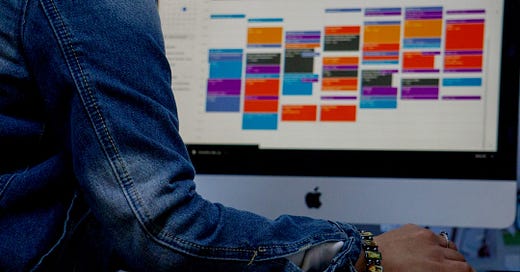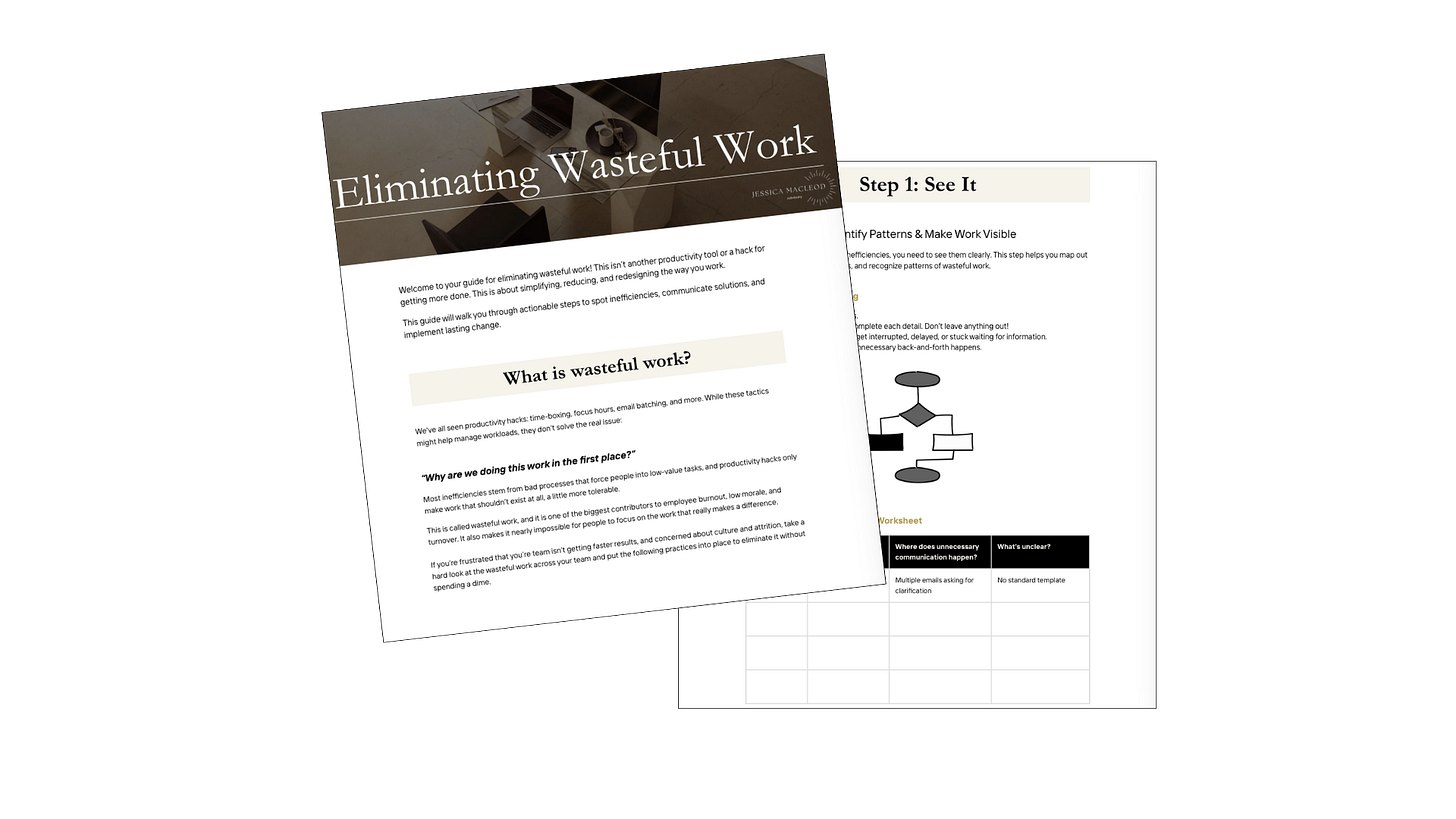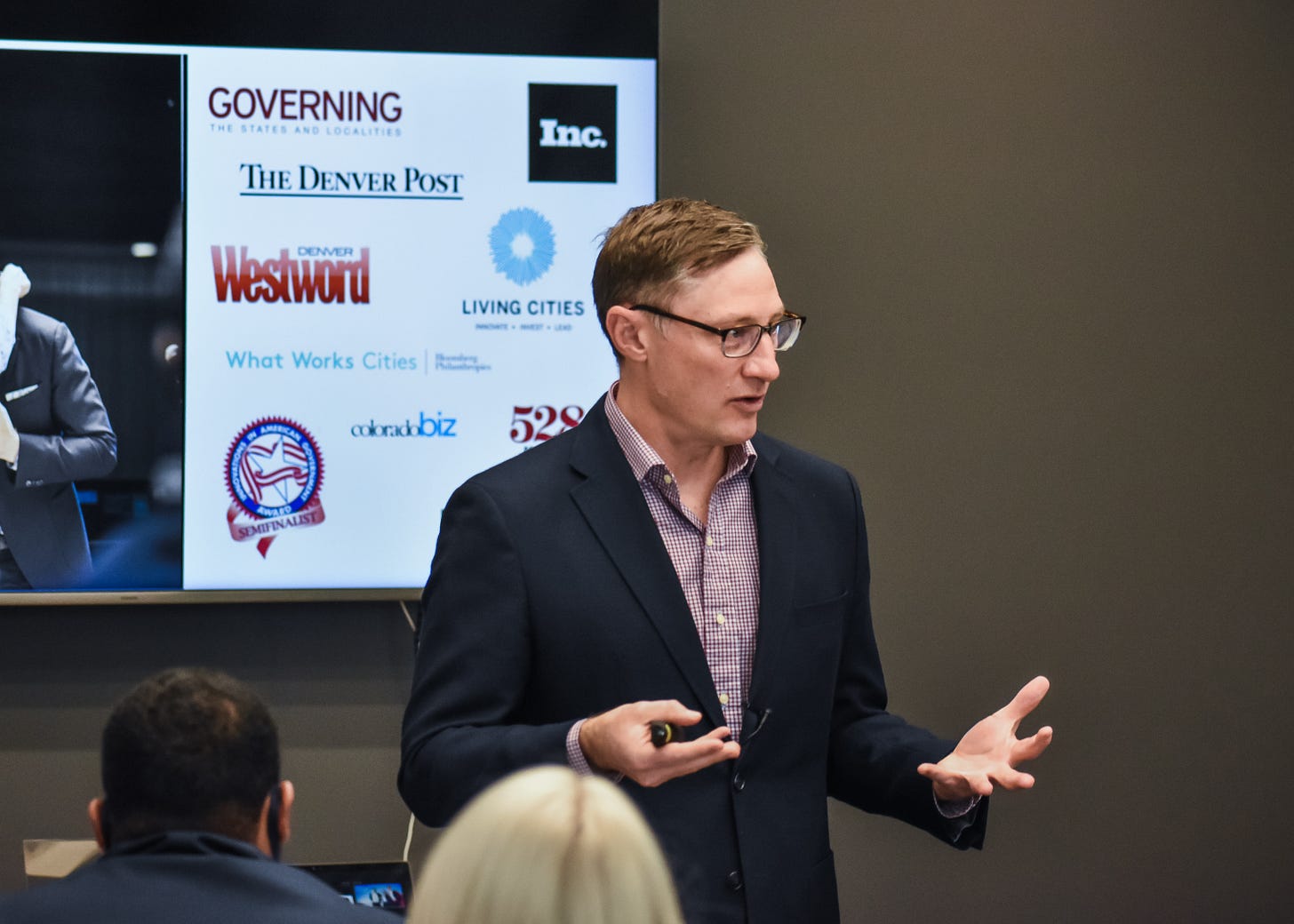Stop Optimizing Work That Shouldn’t Exist
A Conversation On Eliminating Wasteful Work With Brian Elms
Summary:
Productivity isn’t about doing more; it’s about eliminating wasteful work. This post breaks down how inefficient systems—not personal inefficiencies—are the real productivity killer and how leaders can create a culture of autonomy and deep work.
Why This Matters:
Wasteful work drains energy, erodes trust, and drives burnout. Fixing broken processes doesn’t just improve efficiency—it creates a thriving, engaged workforce.
Resources:
Team Alignment workshop with Jessica
Lean Process Improvement workshop with Brian
[Estimated Read Time: 6 minutes]
Do you ever feel like work is just an endless cycle of never-ending emails, meetings, and calls? How many times have you ended the day feeling like much of what you spent your time on was chasing information, repeating yourself, or reporting the same updates in 5 places? It’s painful to work this way, and it needs to change.
I had the joy of sitting down with my friend and process improvement expert, Brian Elms to talk about how to make the “work of work” suck less, so we can get back to doing work we love in ways that don’t run us down.
We've all seen productivity hacks: time-boxing, focus hours, email batching. While these tactics might help manage workloads, they don’t solve the real issue: why are we doing this work in the first place?
According to Brian Elms, these aren't the root of inefficiency—they're symptoms of broken systems. Most inefficiencies stem from bad processes that force people into low-value tasks.
Brian puts it bluntly: "People think they need to work faster or manage their time better, but often, they need to stop doing certain tasks altogether. Productivity hacks won’t fix bad processes—they just make them more tolerable."
This is what I call wasteful work. And the bottom line is, wasteful work is wasteful energy, and if it’s pervasive on your team, it’s crushing your best people.
* You can watch our full conversation on the Thought(ful) Leaders Youtube Channel *
Do You Get “Tapped on the Shoulder” Often?
Many managers carve out dedicated time blocks in the late afternoon for emails, thinking it protects deep work. But this can actually create downstream inefficiencies, delaying others who are waiting for responses. Brian goes so far as to say it’s disrespectful to your team. Ouch—now what?
The real problem isn’t when we answer emails—it’s that work is so dependent on back-and-forth communication in the first place.
Daniel Pink, in Drive, highlights that people crave autonomy, purpose, and mastery in their work. Yet many leaders struggle to create an autonomous workforce. If your team constantly needs approvals or daily check-ins, they’re not truly autonomous.
Signs That Wasteful Work Hurting Your Culture
Meetings
Take status meetings as an example—often framed as essential. Instead of fostering collaboration and advancing shared goals, they become rituals where people feel the need to justify their existence, prove their busyness, or compete for visibility. This breeds anxiety and a culture of performative work rather than real progress.
What to do:
Status meetings should focus on removing blockers, not reporting work.
Move simple updates to shared docs instead.
Limit edits in iterative processes—two rounds of feedback max; if a third is needed, something went wrong upfront.
Emails and Chat
A major warning sign of a wasteful work culture is silent public channels and active private DMs. When employees don’t feel safe discussing work openly, trust erodes, information get’s lost, and the amount of work it takes to get everyone aligned again grows.
Instead of seamless collaboration, people spend excessive time searching for information, playing telephone across teams, or waiting on responses that should be readily available. This fragmented communication makes organizations feel siloed, slows down work, and drains energy from high-value tasks.
What to do:
Treat every email, meeting, or phone call as a process defect: If someone needs to ask for clarification, something in the system isn’t working.
Encourage working in the open, communicating through public channels, and sharing clear expectations about what success looks like.
Leaders often don’t realize how much their teams are silently struggling under the weight of wasted work. Every unnecessary meeting, email, or report represents an inefficiency that drains time and engagement, further reinforcing a culture of distrust and inefficiency.
Your Tools for Eliminating Wasteful Work
The "See It, Say It, Solve It" Approach
Thankfully, Brian has a 3-step process for ditching wasteful work that anyone can follow:
See It: Recognize inefficiencies by mapping processes. Where do delays, unnecessary steps, or approvals slow things down? Write down your process in a visual way. Process diagrams and lists are super simple and helpful tools for making invisible work visible.
Say It: Raise concerns constructively. Instead of "this is inefficient," ask, "Can you help me with this? How might we improve this process?"
Solve It: Start by framing the solution as an opportunity for collective problem-solving. Your first idea is likely not a good one—the best ideas stick over time when multiple people shape them.
Good solutions should be:
Intuitive & Simple: They don’t require major change management. The best fixes reduce work, not add to it.
Mistake-Proof: Like Google Maps auto-fill, they prevent common errors from happening.
Actionable: The simplest improvement? Make a checklist. The second simplest? Follow it.
Asynchronous: Reduce meetings by using short video clips instead of long discussions. A 60-minute meeting can often become a 2-minute Loom or Slack video recording, with questions handled asynchronously.
Swipe Our Toolkit
We created this free guide for you to learn and practice these techniques for eliminating wasteful work in your organization.
Access the Toolkit here: jessicalynnmacleod.com/wasteful-work
A Simple Way To Keep Your Best People Around
Reducing waste isn’t just about efficiency—it creates space for meaningful work and prevents burnout. Leaders must shift from "doing more" to "doing less, better."
As Brian puts it, "Burnout isn’t just about stress—it’s about feeling like your work doesn’t matter." Eliminating waste isn’t just a process fix—it’s a culture shift. People thrive when they focus on high-impact work instead of busywork.
So, instead of optimizing broken processes, eliminate them. Stop hacking your day and start hacking the system.
About Brian Elms:
Brian Elms is the author of Peak Performance and an Urban Leadership Fellow at the University of Nevada Las Vegas. He served as the Director of Peak Academy and Analytics for the City and County of Denver for more than five years. Brian specializes in government innovation and process improvement.
“Irreverent, honest and straightforward,” Brian is nationally recognized for sparking innovation in governments throughout the country. His work has been replicated in more than a dozen cities around the country.
Brian started his career in public service for the Governor Rendell Administration in Pennsylvania as the Policy Director for the Department of Aging. He worked for AARP as a Legislative Specialist and served as the Assistant Director of Government Affairs at Denver International Airport.
Brian is the CEO and Founder of Change Agents Training to focus on creating employee-driven innovation programs around the country. He is currently working with more than a dozen governments to launch programs and establish meaningful innovation programs that improve the lives of employees and their clients.
He is also the Co-Founder of rvrwrk (River Work) a process builder company enhanced by Ai.










